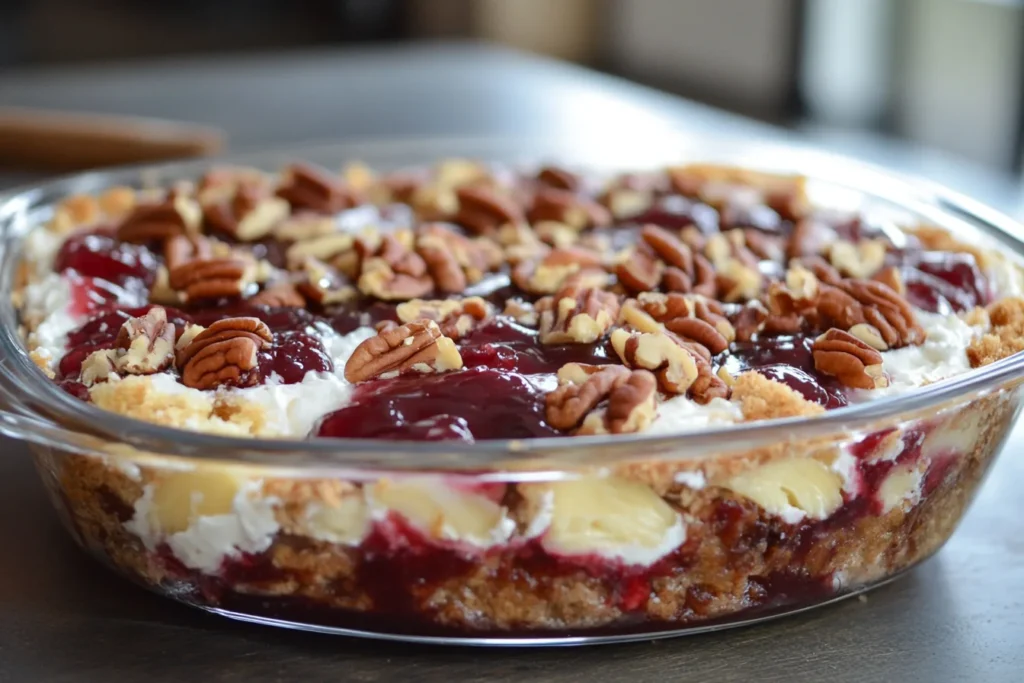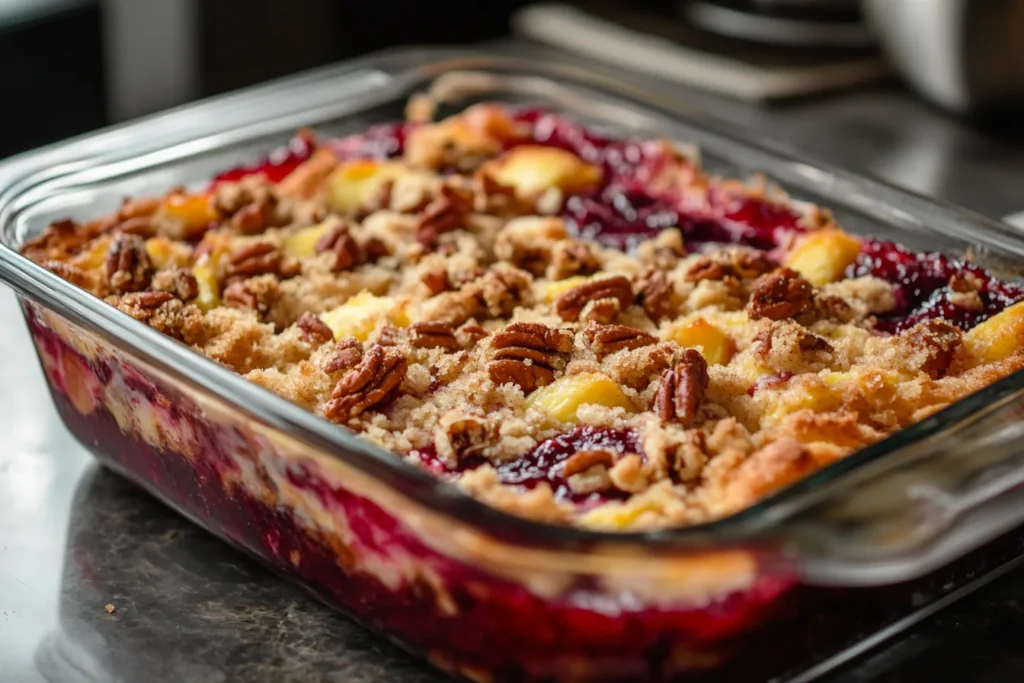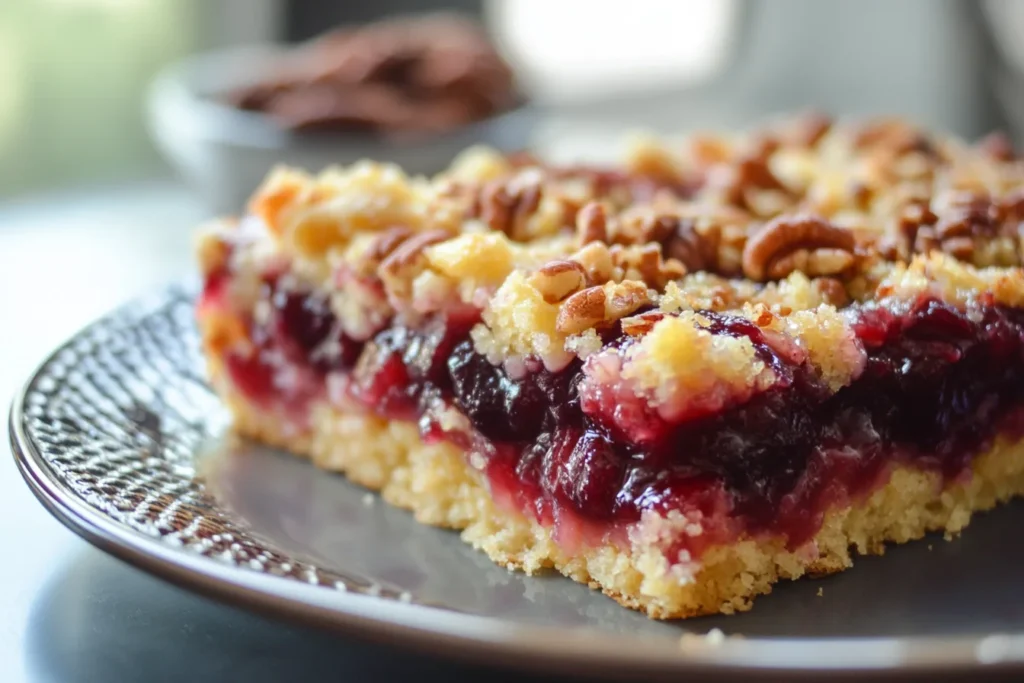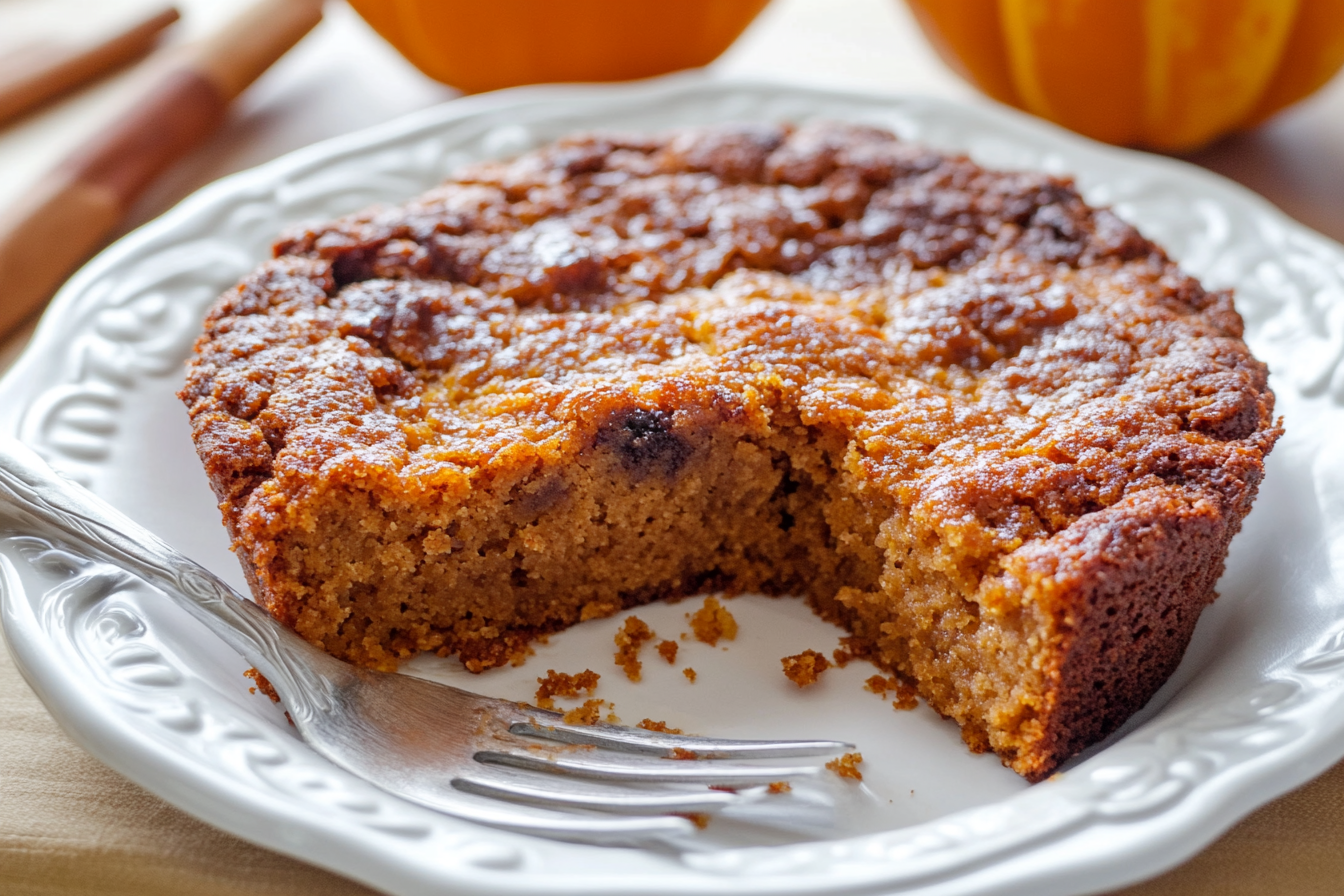What is a Dump Cake?
A dump cake is a delightfully simple dessert that combines convenience and flavor. True to its name, making a dump cake involves “dumping” a handful of ingredients into a baking dish—no intricate mixing or complex steps required. The result is a delicious, cobbler-like dessert that’s perfect for any occasion. Whether you’re hosting a dinner party or satisfying a sweet craving, dump cakes are the go-to treat for their ease and versatility.

The Origins of Dump Cakes RECIPE
The history of dump cakes is as intriguing as the dessert itself. First appearing in mid-20th-century America, this dessert was born out of the need for quick and effortless baking. Its simplicity made it a household favorite, especially during the post-war era, when pre-packaged ingredients became more accessible.
Many historians believe that dump cakes evolved from cobblers and crisps—dishes that also feature fruit fillings and crumbly toppings. Over time, dump cakes gained popularity thanks to their ability to produce a comforting dessert without any fuss.
For more insights into the origins of dump cakes, check out this historical account.
Why Are Dump Cakes RECIPE So Popular?
Dump cakes have skyrocketed in popularity for several reasons:
- Ease of Preparation: Anyone, regardless of culinary skill, can make a dump cake. No electric mixers, special tools, or complicated instructions are required.
- Minimal Ingredients: With just a cake mix, fruit filling, and butter, you can create a dessert that tastes as though it took hours to prepare.
- Customization: From chocolate lovers to fruit enthusiasts, there’s a dump cake variation for everyone.
- Time-Saving: It’s the ultimate dessert hack for busy lifestyles, ready to bake in minutes.
Key Ingredients of a Dump Cake recipe
Cake Mixes: The Foundation
Cake mix serves as the essential base of any dump cake. With various flavors like yellow cake, chocolate, and spice cake, you can effortlessly tailor the flavor profile of your dessert. Brands such as Betty Crocker and Duncan Hines are often recommended for their consistent quality.
Fruit Fillings: Common Choices
Fruit fillings add moisture, texture, and a burst of flavor to your dump cake. Popular options include:
- Canned fruits like cherries, peaches, or pineapples.
- Fresh fruits, which provide a vibrant and slightly less sugary option.
- Frozen fruits, perfect for off-season baking.
When selecting a filling, ensure that it complements the cake mix. For example, a cherry filling pairs beautifully with chocolate cake mix.
Butter as a Binding Agent
Butter is the magic ingredient that transforms a dump cake into a golden, crispy delight. Spread over the cake mix, butter melts during baking to bind all the ingredients together. You can use either:
- Unsalted butter for a neutral taste.
- Salted butter to enhance the sweetness subtly.
The Simplicity of Dump Cake recipe Preparation
Steps to Make a Basic Dump Cake
- Preheat your oven to 350°F (175°C).
- Dump a can of fruit filling into a greased baking dish.
- Evenly sprinkle a box of cake mix over the fruit.
- Add a layer of thinly sliced butter or grated butter on top.
- Bake for 40–45 minutes until the top turns golden brown and crispy.
Advantages of the “Dump” Technique
The dumping technique eliminates the need for mixing bowls, whisks, and multiple steps. This not only saves time but also reduces the pile of dishes to wash afterward. Additionally, the layering approach ensures that the dessert retains a rustic, homemade charm.
Part 2: Common Mistakes When Making a Dump Cake
The Biggest Mistake: Uneven Distribution of Ingredients
One of the most common pitfalls when making a dump cake is unevenly distributing the ingredients. This can lead to dry spots, overly soggy areas, or an inconsistent texture. Dump cakes rely on a simple layering method, but precision is key to achieving a balanced dessert.

Why Layering Matters
Layering in dump cakes is not just about aesthetics—it directly affects the baking process. Uneven layers can cause:
- Dry cake mix patches: These occur when parts of the cake mix don’t get enough moisture from the fruit filling or butter.
- Overly wet sections: Too much fruit in one area can make the cake soggy.
- Uneven texture: Improper layering results in parts of the cake that are overly crunchy or underbaked.
To prevent this, take time to spread the ingredients evenly across the baking dish. A spatula can help level the fruit layer, while a spoon is useful for distributing cake mix uniformly.
Avoiding Dry Spots in the Cake Mix
Dry spots occur when the cake mix is not adequately moistened during baking. To avoid this:
- Ensure butter coverage: Use enough butter to cover the entire surface of the cake mix. Grated butter tends to work better for even distribution.
- Adjust the fruit layer: Add an extra ¼ cup of liquid, such as fruit juice or water, if the fruit layer seems too thick.
- Press lightly: Before baking, gently press the dry cake mix with a spatula to help it absorb the moisture from the fruit below.
Choosing the Wrong Type of Butter
Butter is a critical ingredient in dump cakes, acting as the binding agent that holds everything together. Selecting the wrong type of butter can drastically impact the flavor and texture of your dessert.
Salted vs. Unsalted Butter
- Salted butter adds a hint of saltiness that can enhance the sweetness of the cake. However, it’s essential to balance this with the sugar content of your fruit filling and cake mix.
- Unsalted butter is often the safer choice because it provides a neutral flavor base. This option is ideal if you prefer to have complete control over the seasoning.
For best results, opt for high-quality butter, as the fat content directly impacts the richness of your cake.
Overloading with Too Many Ingredients
While dump cakes are versatile and customizable, adding too many ingredients can overwhelm the dessert. Overloading with toppings like nuts, chocolate, or extra layers of fruit can lead to:
- A soggy bottom layer.
- Excessively sweet flavors.
- Difficulty in achieving even baking.
Keeping It Simple and Balanced
When it comes to dump cakes, less is more. Stick to the basic formula of:
- One layer of fruit filling.
- One box of cake mix.
- A layer of butter.
If you want to add additional ingredients, limit them to one or two elements. For example, sprinkle ½ cup of shredded coconut or a handful of chopped pecans for added texture.
Ignoring Oven Temperature Accuracy
Oven temperature plays a crucial role in baking a perfect dump cake. An oven that’s too hot can cause the edges to burn while leaving the center undercooked. Conversely, a low temperature may result in a soggy cake.
How to Ensure Even Baking
- Preheat your oven: Always allow your oven to reach the desired temperature (usually 350°F) before placing the dump cake inside.
- Use an oven thermometer: Built-in oven settings can sometimes be inaccurate. A thermometer ensures you’re baking at the correct temperature.
- Rotate the dish: Halfway through baking, rotate the baking dish to ensure even heat distribution.
By taking these precautions, you can avoid common baking mishaps and achieve a uniformly golden crust.
Using the Wrong Pan Size
The size and depth of your baking dish significantly affect the outcome of a dump cake. Using a pan that’s too small can lead to overflowing, while a pan that’s too large may cause the cake to dry out.
How Pan Depth Impacts Cooking
- Shallow pans: These work best for thin, crispy cakes but may require a shorter baking time.
- Deep pans: Ideal for layered dump cakes, but ensure the fruit layer is evenly spread to prevent sogginess.
A standard 9×13-inch baking dish is the most recommended size for traditional dump cakes. This size provides enough surface area for even baking while allowing the layers to cook through properly.
Part 3: Tips to Perfect Your Dump Cake Every Time
Tips for Consistently Delicious Dump Cakes
Making the perfect dump cake is an art as much as it is a science. While the recipe is simple, mastering the finer details ensures that each cake comes out deliciously golden, moist, and flavorful. From choosing the right ingredients to enhancing flavors with unique techniques, these tips will elevate your dump cake game.

How to Choose the Right Fruit Filling
The fruit filling you select defines the flavor profile and texture of your dump cake. Each option—fresh, canned, or frozen—has its own set of advantages.
Fresh vs. Canned vs. Frozen Options
- Fresh fruits: Ideal for a natural, less sugary taste. Apples, peaches, and berries are great choices. However, fresh fruits require additional prep, such as slicing and sometimes pre-cooking.
- Canned fruits: The most convenient option, canned fillings like cherry or pineapple are pre-sweetened and ready to use. Opt for high-quality brands with no added preservatives.
- Frozen fruits: A versatile choice, frozen fruits offer a balance between freshness and convenience. Be sure to thaw them and drain excess moisture before use to avoid a soggy cake.
For a balanced dessert, pair fruit fillings with complementary cake mixes. For example, a spice cake mix pairs wonderfully with apple or pumpkin fillings.
Techniques for Spreading Butter Evenly
Properly distributing butter across the cake mix is essential for achieving a golden crust. Uneven butter coverage can result in dry patches, so mastering this technique is crucial.
Grating vs. Slicing for Best Coverage
- Grated butter: Use a cheese grater to shred butter into small pieces. This allows for better distribution and even melting during baking.
- Sliced butter: Thinly sliced butter is another effective method. Ensure the slices overlap slightly to avoid gaps.
If you’re short on time, consider freezing the butter beforehand. Cold butter is easier to grate or slice into thin pieces.
How to Enhance Flavors with Spices
Adding spices can transform a basic dump cake into a gourmet dessert. Simple yet powerful, spices like cinnamon, nutmeg, and vanilla extract complement most fruit fillings and cake mixes.
Adding Cinnamon, Nutmeg, or Vanilla
- Cinnamon and nutmeg: These warm spices work particularly well with apple or pumpkin fillings, giving the cake a comforting, autumnal flavor.
- Vanilla extract: A teaspoon of vanilla extract can enhance the sweetness of the fruit and bring out deeper flavor notes in the cake mix.
- Experiment with spice blends: Pre-made blends like chai spice or pumpkin spice can add complexity to your dump cake with minimal effort.
Sprinkle spices directly over the fruit layer before adding the cake mix, ensuring they’re evenly distributed.
Creative Variations on the Classic Dump Cake
While the traditional dump cake recipe is beloved for its simplicity, there’s plenty of room for creativity. Experiment with different ingredients to craft unique versions that suit your taste preferences.
Incorporating Nuts, Coconut, or Chocolate
- Nuts: Chopped pecans, almonds, or walnuts add crunch and a nutty richness.
- Coconut: A sprinkle of shredded coconut lends a tropical flair, especially when paired with pineapple or mango fillings.
- Chocolate: Mix chocolate chips into the cake layer or add a drizzle of melted chocolate after baking for an indulgent twist.
For a special occasion, consider combining several add-ins, such as coconut and macadamia nuts, to create a Hawaiian-inspired dump cake.
How to Serve and Store Your Dump Cake
Proper serving and storage are key to enjoying your dump cake at its best, whether freshly baked or saved for later.
Best Practices for Refrigerating and Reheating
- Refrigeration: Allow the cake to cool completely before covering it tightly with plastic wrap or aluminum foil. Store in the refrigerator for up to 5 days.
- Reheating: Warm individual portions in the microwave for 20–30 seconds or heat the entire cake in an oven at 325°F for 10–15 minutes.
For added flair, serve your dump cake with whipped cream, a scoop of vanilla ice cream, or a drizzle of caramel sauce.

